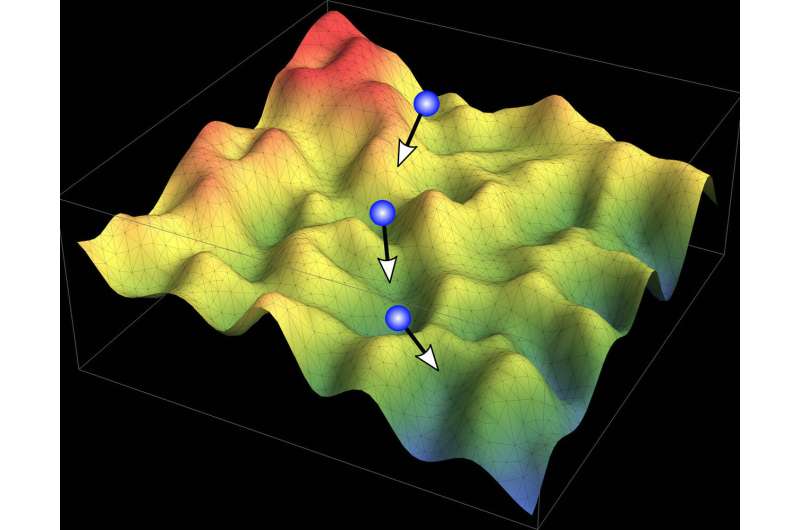Physicists use computer simulation to investigate aging in living glassy systems

Aging is a process that affects not only living beings. Many materials, like plastics and glasses, also age—i.e. they change slowly over time as their particles try to pack better—and there are already computer models to describe this. Biological materials, such as living tissue, can show similar behavior to glasses except that the particles are actual cells or bacteria which have their own propulsion. Researchers at the University of Göttingen have now used computer simulations to explore the aging behavior of these "living" glassy systems. There was a surprise in that the activity of the particles can actually drive aging, which has potential consequences for a number of applications. Their research was published in Physical Review Letters.
In materials like glasses and plastics, their particles pack together better over time (ie they age). But if this process is disturbed by mechanical deformation, for instance if a solid is bent, then the materials go back to their earlier state and are thus 'rejuvenated'. To model what happens in biological systems, physicists at the University of Göttingen developed extensive computer simulations of a model of a glass made up of active particles (a living glass).
Just as it would in a real biological system, each particle in the simulation has its own propulsion force; this is modeled as changing direction randomly over time. Then the researchers varied the timescale of these changes in direction. When this timescale is short, particles are propelled randomly as if they were at a higher temperature, and this is known to produce aging. But when direction changes are slow, particles try to keep going in the same direction and this should act like local deformation, thus stopping aging. However, the simulations here showed something interesting and unexpected: when the activity of the particles is very persistent, it actually drives aging in living glassy systems.
"We were really surprised when we saw that persistent active propulsion can cause aging. We had expected it to work like small-scale deformation in the material that would rejuvenate it," comments Dr. Rituparno Mandal from the Institute for Theoretical Physics at the University of Göttingen. He goes onto say, "But in fact, the local deformation is so slow that the particles can effectively go with the flow and use their motion to find lower energy arrangements. In effect, they pack better."
Senior author, Professor Peter Sollich, also from the University of Göttingen, added "The research highlights important features of glassy behavior in active materials that have no comparable behavior in conventional glasses. This might have implications for many biological processes where glass-like effects have been identified, including cell behavior in wound-healing, tissue development and cancer metastasis."
More information: Rituparno Mandal et al, Multiple Types of Aging in Active Glasses, Physical Review Letters (2020). DOI: 10.1103/PhysRevLett.125.218001
Journal information: Physical Review Letters
Provided by University of Göttingen



















